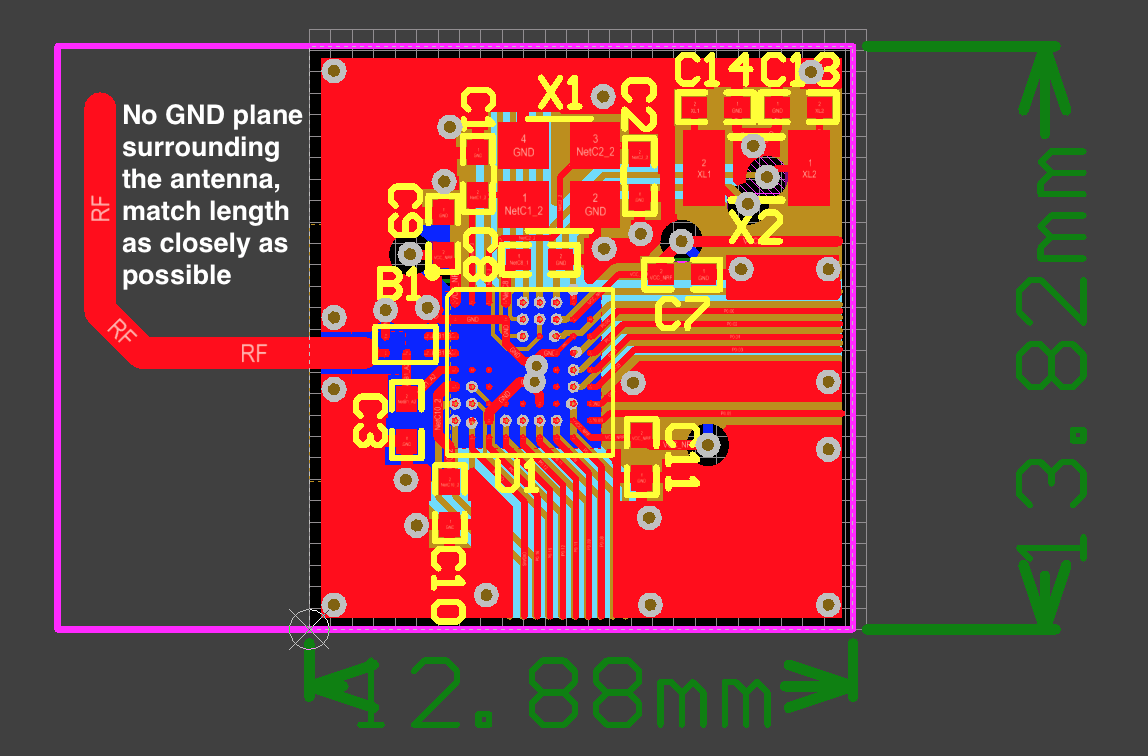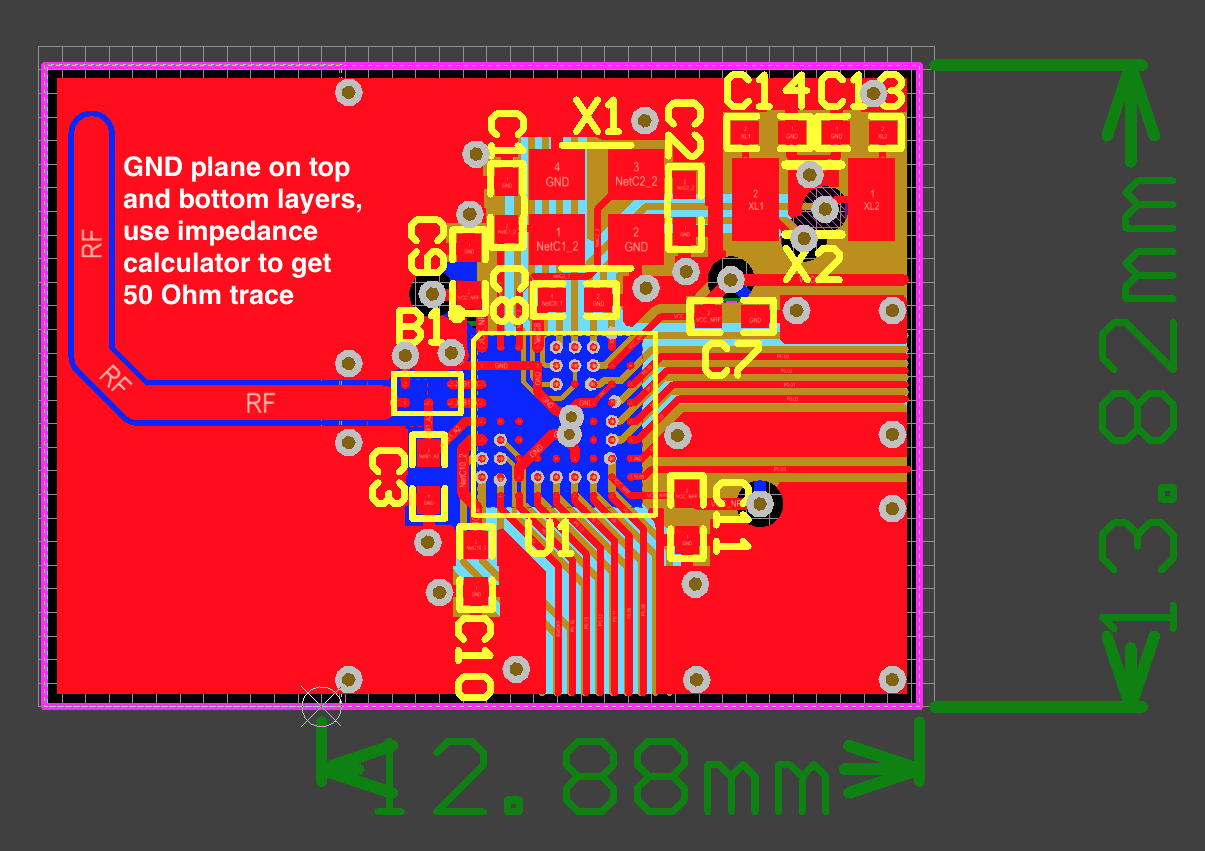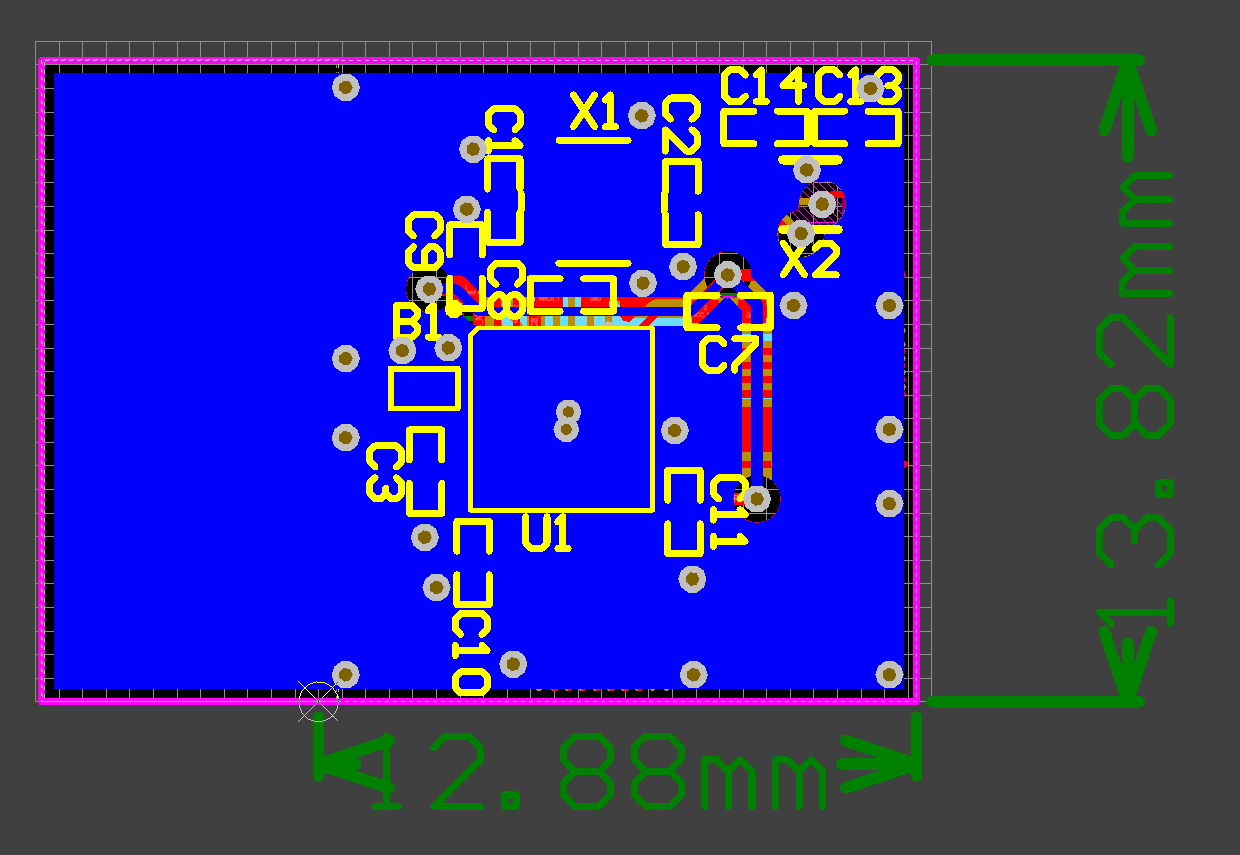Hi there,
It isn't obvious from the reference layouts on the downloads page for nRF51822-CFAC if the ground plane is supposed to create a 50 Ohm trace going into the balun, or if there should be a ground pour around the antenna at all.
Should there be no ground around the antenna trace like this

and then match the 1/4 wavelength antenna length as closely as possible?
Or, should there be a ground pour on the top and bottom layers like this


and then I can use an impedance calculating tool to calculate 50 Ohms on the antenna trace, based on the antenna distance from ground?
Finally, I think I should add a shunt component to the antenna trace near the balun for final tuning. Is that a good idea? Should I add an entire Pi network instead? Or nothing at all?
Thanks for your help, this forum is always extremely helpful. Brian


